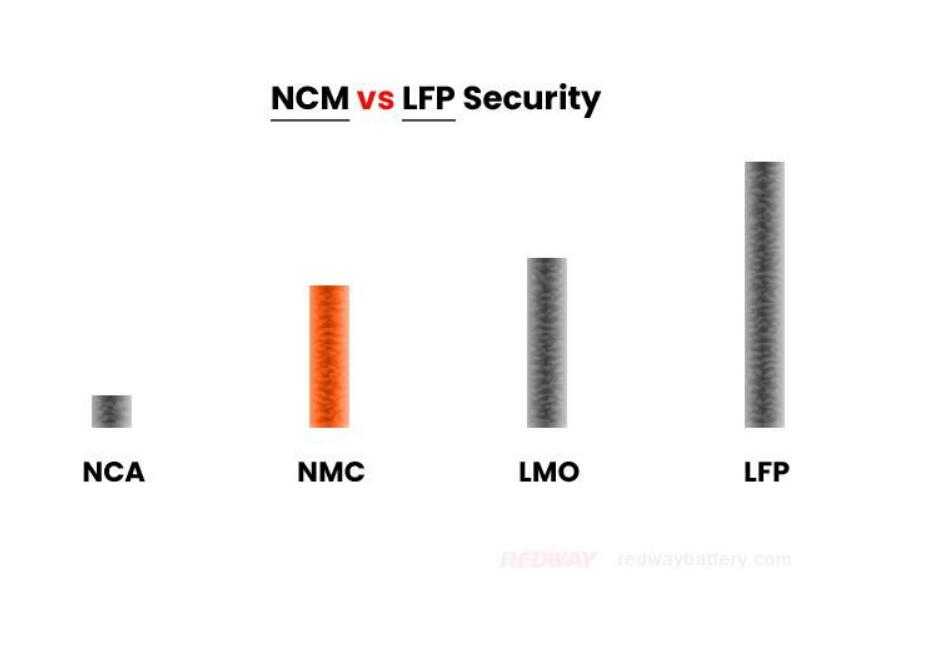
When it comes to selecting the ideal battery for your application, understanding the differences between various battery chemistries is crucial. Two prominent contenders in the realm of rechargeable batteries are NMC (Nickel Manganese Cobalt) and LiFePO4 (Lithium Iron Phosphate). Both offer distinct advantages and disadvantages, making the choice between them a matter of careful consideration. In this comprehensive comparison guide, we'll delve into the intricacies of NMC vs LiFePO4 batteries to help you make an informed decision. NMC vs LiFePO4 Battery
Introduction to NMC and LiFePO4 Batteries
Before diving into the comparison, let's briefly outline the key characteristics of NMC and LiFePO4 batteries.
NMC Batteries:
NMC batteries are a type of lithium-ion battery that typically contains nickel, manganese, and cobalt in varying proportions. This chemistry is known for its high energy density, which translates to longer runtimes and enhanced performance in applications requiring high power output. NMC batteries are commonly used in electric vehicles (EVs), portable electronics, and grid energy storage systems.
LiFePO4 Batteries:
LiFePO4 batteries, on the other hand, are comprised of lithium iron phosphate as the cathode material. These batteries are recognized for their exceptional safety, longevity, and thermal stability. While LiFePO4 batteries may have a slightly lower energy density compared to NMC batteries, they offer superior cycle life and are less prone to thermal runaway, making them an ideal choice for applications where safety and reliability are paramount, such as solar energy storage, medical devices, and backup power systems.
Comparing Key Parameters: NMC vs LiFePO4
Now, let's delve deeper into the comparison between NMC and LiFePO4 batteries across various parameters:
1. Energy Density:
NMC batteries typically boast a higher energy density compared to LiFePO4 batteries. This means that NMC batteries can store more energy per unit volume or weight, making them suitable for applications where space and weight constraints are critical. However, it's essential to note that the energy density of NMC batteries comes at the expense of cycle life and safety.
2. Cycle Life:
One of the significant advantages of LiFePO4 batteries is their exceptional cycle life. LiFePO4 batteries can endure a significantly higher number of charge-discharge cycles compared to NMC batteries, making them a cost-effective solution in the long run. This extended cycle life is particularly beneficial in applications where batteries undergo frequent charging and discharging, such as renewable energy storage and off-grid systems.
3. Safety:
Safety is paramount when it comes to battery technology, especially in applications where batteries are subjected to harsh conditions or high operating temperatures. LiFePO4 batteries have a distinct edge over NMC batteries in terms of safety due to their inherent thermal stability and reduced risk of thermal runaway. The robust chemical structure of LiFePO4 minimizes the likelihood of overheating, making these batteries less susceptible to fire or explosion, even under extreme conditions.
4. Cost:
In terms of upfront cost, NMC batteries are generally more cost-effective compared to LiFePO4 batteries. However, when considering the total cost of ownership over the battery's lifetime, including factors such as cycle life and maintenance costs, LiFePO4 batteries may offer better value in certain applications. It's essential to weigh the initial investment against long-term benefits to determine the most cost-effective solution for your specific requirements.
5. Performance in Extreme Conditions:
NMC batteries tend to perform better in extreme temperature conditions compared to LiFePO4 batteries. The broader operating temperature range of NMC batteries makes them suitable for applications where temperature fluctuations are common, such as automotive and outdoor environments. However, LiFePO4 batteries excel in maintaining stability and performance even under high temperatures, making them ideal for applications in hot climates or demanding operating conditions.
Conclusion
In conclusion, both NMC and LiFePO4 batteries offer unique advantages and are well-suited for different applications. The choice between them ultimately depends on your specific requirements, priorities, and operating conditions. If you prioritize high energy density and performance in a compact form factor, NMC batteries may be the preferred choice. On the other hand, if safety, longevity, and reliability are your primary concerns, LiFePO4 batteries offer a compelling solution.
Whether you're powering an electric vehicle, storing renewable energy, or designing a portable electronic device, carefully evaluate the key parameters and consider the trade-offs between NMC and LiFePO4 batteries to make an informed decision that aligns with your needs and objectives. By understanding the nuances of each battery chemistry and weighing the pros and cons, you can choose the right battery for your application with confidence.
In conclusion, when deciding between NMC and LiFePO4 batteries, it's crucial to assess your specific requirements and priorities to determine which chemistry best aligns with your needs. Whether you prioritize energy density, cycle life, safety, cost, or performance in extreme conditions, understanding the differences between NMC and LiFePO4 batteries is essential for making an informed decision. By carefully evaluating the key parameters and considering the trade-offs, you can select the right battery chemistry to power your applications effectively and efficiently.
